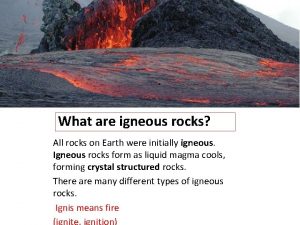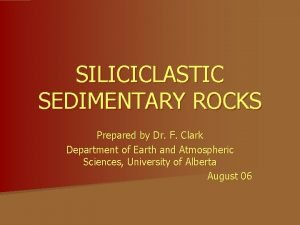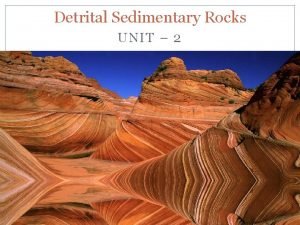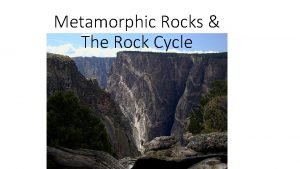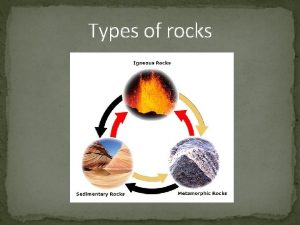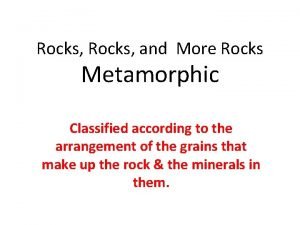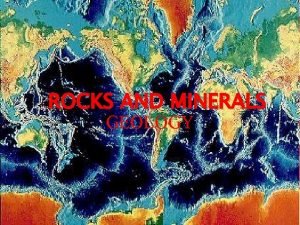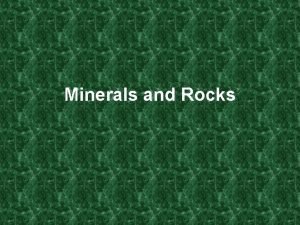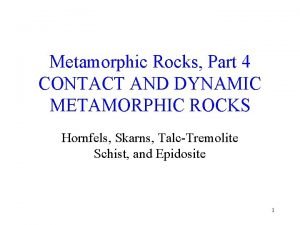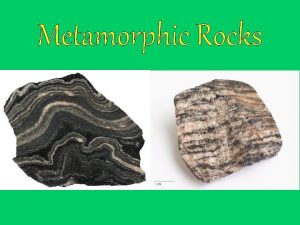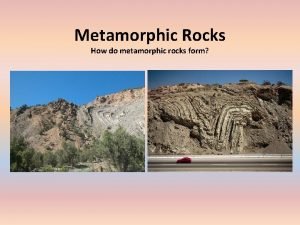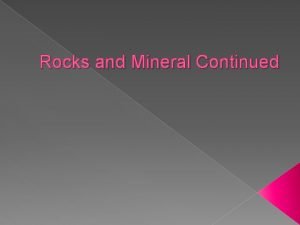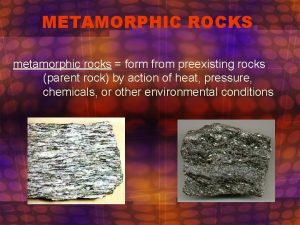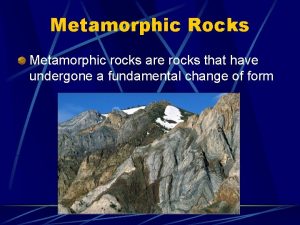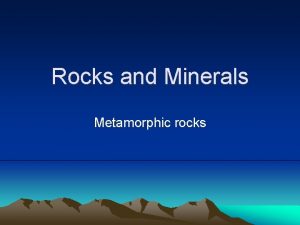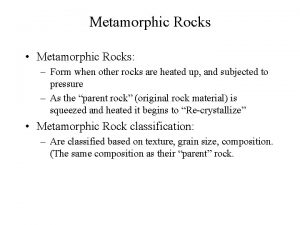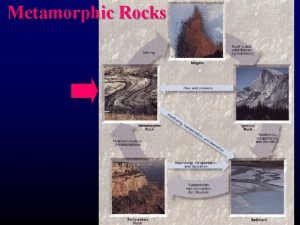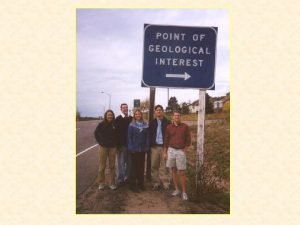Metamorphic Rocks Metaconglomerate Conglomerate All metamorphic rocks were






















- Slides: 22

Metamorphic Rocks

Metaconglomerate Conglomerate All metamorphic rocks were originally igneous or sedimentary. Heat and pressure over long periods of time alter the original rock The pressure may be from the top Or sides

The metamorphic process may cause any of the following to occur to the rock: 1. An overall increase in the rock density 2. The appearance of new mineral crystals (ex. diamond, garnet graphite, or talc) 3. An alignment of existing crystals or new crystals to produce a certain foliation 4. A recrystallization of existing minerals (ex. calcite crystals in the limestone become altered to form marble)

Low grade metamorphism results from the weight of overlying sediments plus some heat from below This often produces slate from shale

(low grade) Pressure from weight of overlying sediment

To produce high level metamorphism, much more pressure is needed than can be provided by the weight of overlying sediments This pressure comes from the side from plate collision After sideways squeezing

This sideways squeezing produces metamorphic rocks like schist

Schist rock resulting from high lateral squeezing

Another schist rock

garnet schist

If the intense squeezing is combined with extremely high temperatures, a gneiss is produced. This is the highest degree of metamorphism a rock can undergo without melting

banded gneiss

Garnet gneiss

hornblende gneiss

All of the metamorphism you have seen so far has been regional metamorphism In regional metamorphism the entire region is subject to pressure and or high temperature When hot molten rock (magma) comes up to the surface from deep inside the earth, the high temperature of the magma alters the rock which comes in contact with it. This is known as contact metamorphism

Hornfels magma

Contact metamorphism here





How can you tell if a rock is METAMORPHIC? Look for Banding or Foliation of Mineral Crystals (NOT layering of sediment grains) Look for evidence of deformation, like intense folding Look for new mineral crystals forming in the rock (garnet)
 Sedimentary igneous and metamorphic
Sedimentary igneous and metamorphic Igneous rock to metamorphic rock
Igneous rock to metamorphic rock Ignition rocks
Ignition rocks What is a conglomerate?
What is a conglomerate? Matrix supported conglomerate
Matrix supported conglomerate Backflip takeover examples in india
Backflip takeover examples in india Conglomerate composition
Conglomerate composition Conglomerate examples
Conglomerate examples Batu lempung
Batu lempung Conglomerate
Conglomerate Blank brothers us entertainment conglomerate
Blank brothers us entertainment conglomerate Conglomerate h form design
Conglomerate h form design Tropic thunder budget and gross
Tropic thunder budget and gross Mass media conglomerate
Mass media conglomerate Financial conglomerate definition
Financial conglomerate definition Conglomerate diversification
Conglomerate diversification Metamorphic rocks with a layered or banded look are called
Metamorphic rocks with a layered or banded look are called How do igneous rocks form
How do igneous rocks form Metamorphic rocks characteristics
Metamorphic rocks characteristics Uses of metamorphic rocks
Uses of metamorphic rocks Characteristics of metamorphic rocks
Characteristics of metamorphic rocks Luster and streak
Luster and streak Dynamic metamorphic rocks examples
Dynamic metamorphic rocks examples


